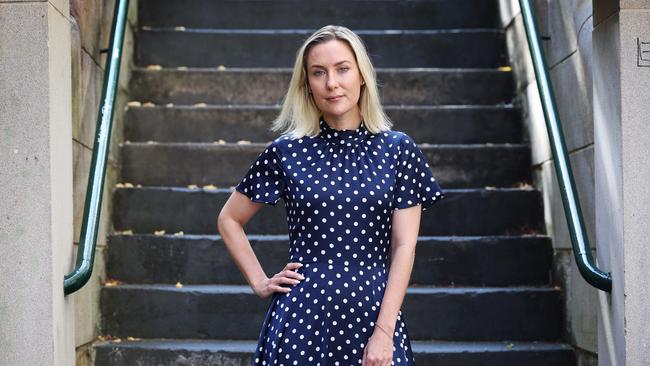This ‘below the button’ disease is hitting too many Australians. Why is no one talking about it?
About 180,000 Australians live with this painful, lifelong condition involving inflammation of the gastrointestinal tract. But as cases grow globally, Australia leads the pack.

Ultra-processed food is contributing to a significant rise in inflammatory bowel disease in Australia, at a rate that is leading Western nations, yet many sufferers are too ashamed to talk about their condition, according to a new report.
About 180,000 Australians live with IBD, a painful, lifelong condition involving inflammation of the gastrointestinal tract. It most commonly appears as Crohn’s disease, causing inflammation of the gastrointestinal tract, or as ulcerative colitis, where inflammation is limited to the colon or large intestine.
The State of the Nation report into IBD in Australia, which is being released on Tuesday by federal Health Minister Mark Butler, says that while cases are growing globally, “Australia is leading the pack”.

Prevalence is expected to increase by 238 per cent between 2010 and 2030 – the highest growth rate among Western countries. Current case numbers already far exceed more high-profile conditions such as multiple sclerosis. Yet IBD “increasingly lacks any real policy focus by governments today and is at risk of falling through the cracks”, according to the report.
While the rising incidence is due in part to environmental factors including ultra-processed foods and smoking, the comparative lack of awareness of IBD is compounded by the shame attached to it, Crohn’s & Colitis Australia chief executive Leanne Raven says.
“These symptoms are awful things to live with,” she says of a list that includes bloodied stools and a need to rush to the toilet dozens of times a day. “It’s below the button. It’s hard stuff to talk about over a meal.”
For patients, IBD can be a painful condition. “If you think of when you burn yourself on something and it’s sore and blistering and it’s painful – and all of that is in your digestive system,” Raven says.
Yet, on average, patients wait 1½ years to be diagnosed, then another three years until they are in remission, the report finds: “Nearly five years of suffering after seeking help is excessive and avoidable for most.”
Associated health costs are also significant. IBD patients are described as “the most ‘frequent flyers’ of the hospital system”, with higher rates of hospitalisation and emergency department presentations than cancer patients.
Financial costs are similarly stark. The total economic impact of IBD to the community in 2025 is expected to be about $7.8bn. Across the next decade the disease’s total economic burden, without action, is expected to be $77.9bn, including healthcare costs, productivity losses and years of living with disability.
Because of the nature of its symptoms and their severity, patients often are unable to attend school or university and social activities have to be curtailed. The report estimates that out-of-pocket costs for those who are unable to work because of the disease can be as high as 15 per cent of disposable household income.

“If you’re diagnosed at 20, this disease doesn’t go away. You’re going to have this for the next 70 years, so there’s a compounding prevalence,” says Greg Moore, a board member of Crohn’s & Colitis Australia and head of inflammatory bowel disease at Monash Health and Monash University.
“Imagine if you’re a young person and you think the world is completely at your feet and you’re struck down. You no longer trust your body. You can’t complete your education. You may fear having relationships. It can be completely life-changing – and to such a point a great lot of people will actually consider voluntary childlessness because they feel so sick.”
To combat the heavy burdens of the disease, for which there are combinations of treatments but no cure, Moore says greater awareness of symptoms is needed among the public and general practitioners. A simple stool test, for example, can indicate inflammation in the bowel.
To improve outcomes for people with IBD, the report recommends, among other things, developing a national virtual network of multidisciplinary teams and improving access to medicines through the Pharmaceutical Benefits Scheme.
It also stresses the need for a clinical care standard to provide a blueprint on treating patients, as already occurs with some other serious health conditions.

Sophie’s story
Before she was diagnosed with Crohn’s disease, Sophie Muir spent a fraught and agonising year waiting for answers. “I was told everything: ‘Maybe you’re just gluten intolerant,” she says of the most common response to her often debilitating symptoms.
Screaming from pain, affected by nausea, losing weight and experiencing frequent diarrhoea, she was examined by numerous doctors and rushed to casualty countless times.
“They give you Panadol and monitor your fever,” says Muir, 34, who runs a Sydney PR agency. “No one could see any obvious issue so they just sent you home.”
Only when she had some startling and visible symptoms, her feet and ankles severely swollen, was there a change in her pattern of care. With hospital staff concerned that she had deep vein thrombosis, “all of a sudden there was an urgent issue to look at”.
For the first time in her numerous medical visits, a sample of her blood was taken – and within hours she had a likely answer. The cause of her months of pain was inflammatory bowel disease.
“They give you Panadol and monitor your fever. No one could see any obvious issue so they just sent you home.”
Muir’s story of agony and prolonged diagnosis is not unique. The report released on Tuesday reveals that patients with IBD wait an average of 1½ years to be diagnosed. They are also among the nation’s most heavily hospitalised, even exceeding stays by cancer patients.
“It’s very much an invisible illness,” Muir says of IBD’s comparatively low profile, despite its growing numbers. Its growth rate in Australia is the highest of Western countries.
“The other issue is people are embarrassed about it. No one wants to talk about the fact that as soon as they eat something they’re in chronic pain and their dinner is going straight through them.”
Twelve years since Muir’s diagnosis, her symptoms are mostly under control thanks in part to recent surgery to resection a portion of her bowel. She also self-administers immunosuppressant injections every eight weeks.
“But it doesn’t take much to have a bad night or a morning where I can’t get off the toilet and it just drains the energy in your body,” she says.





To join the conversation, please log in. Don't have an account? Register
Join the conversation, you are commenting as Logout